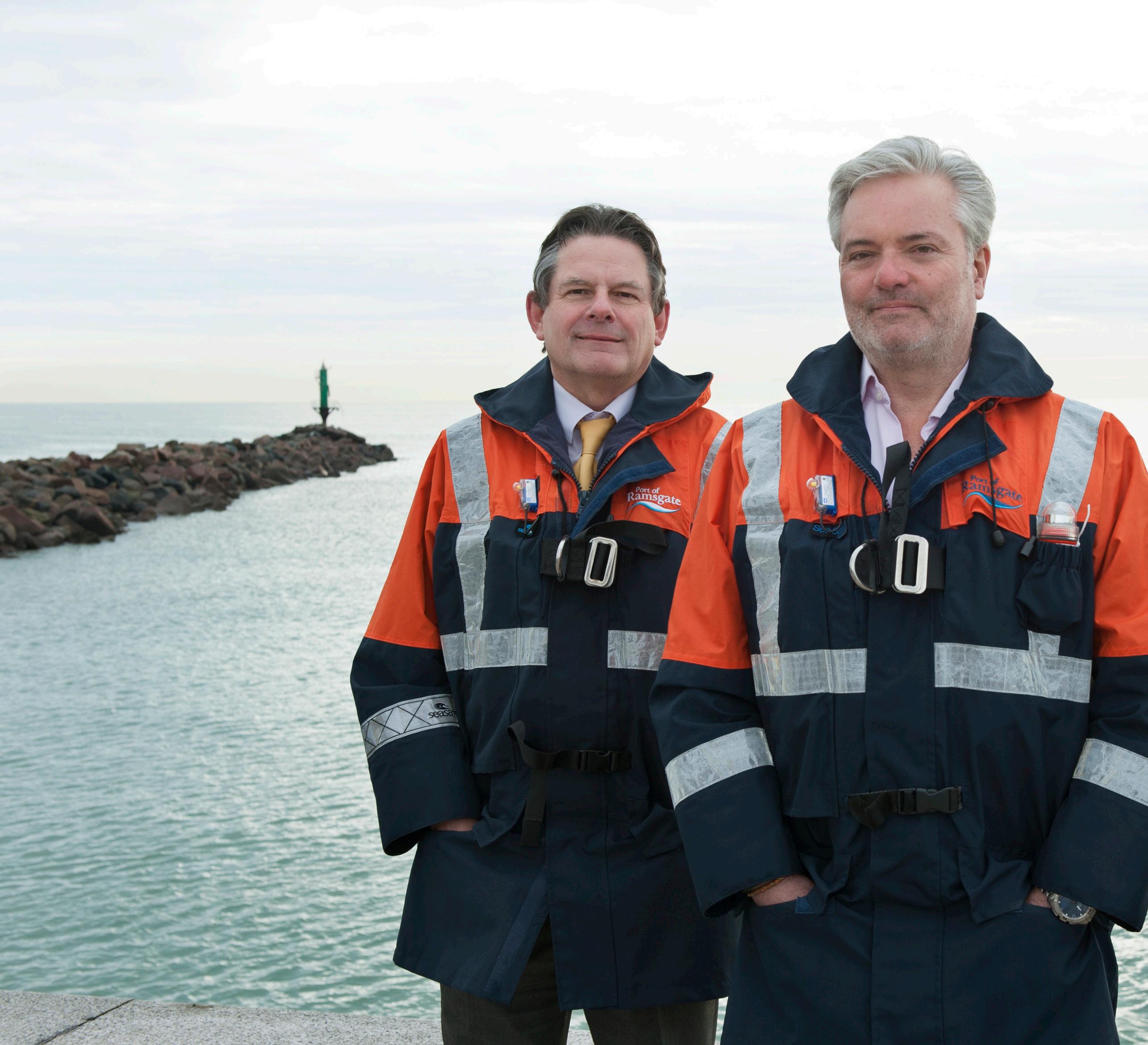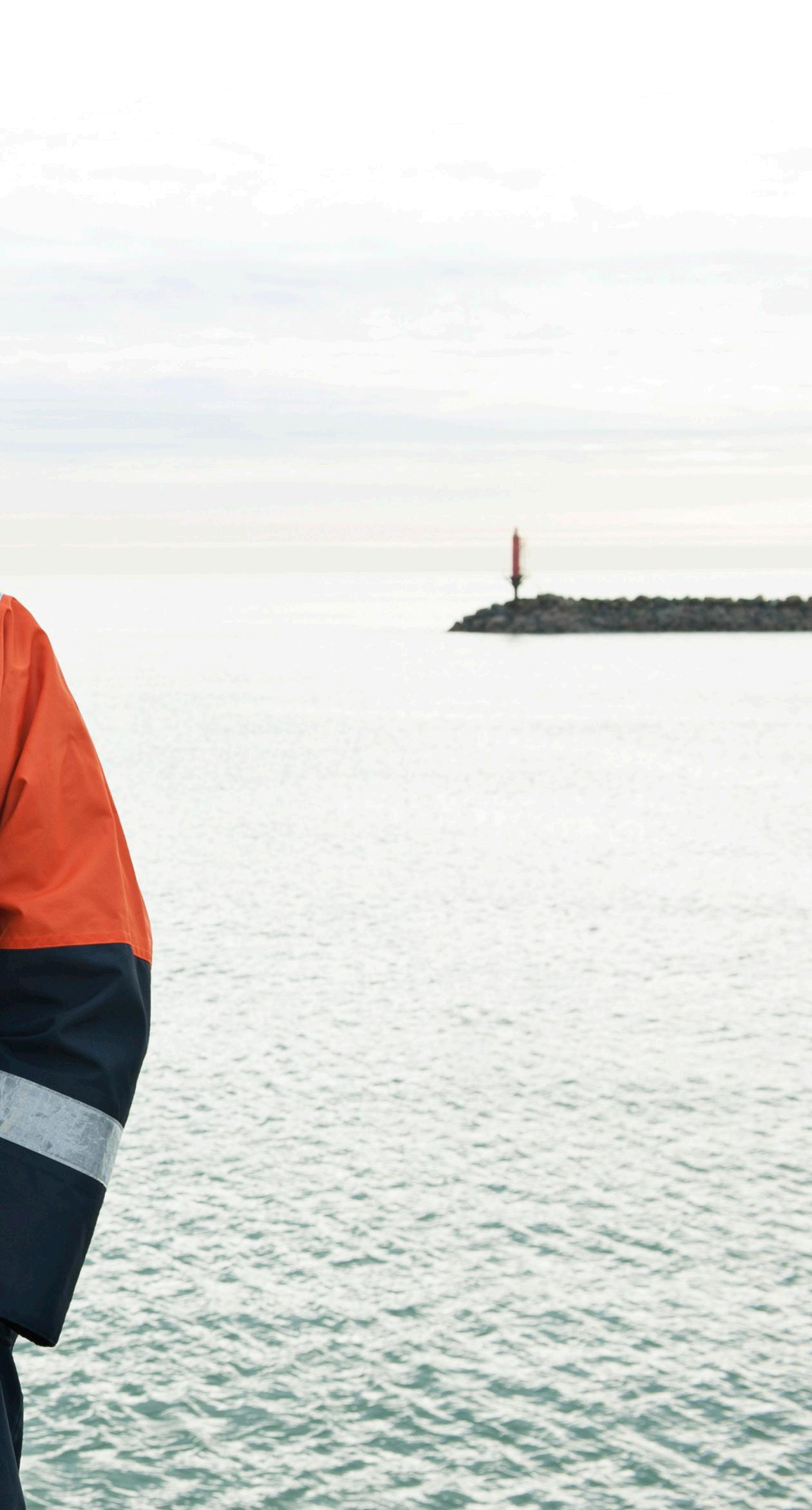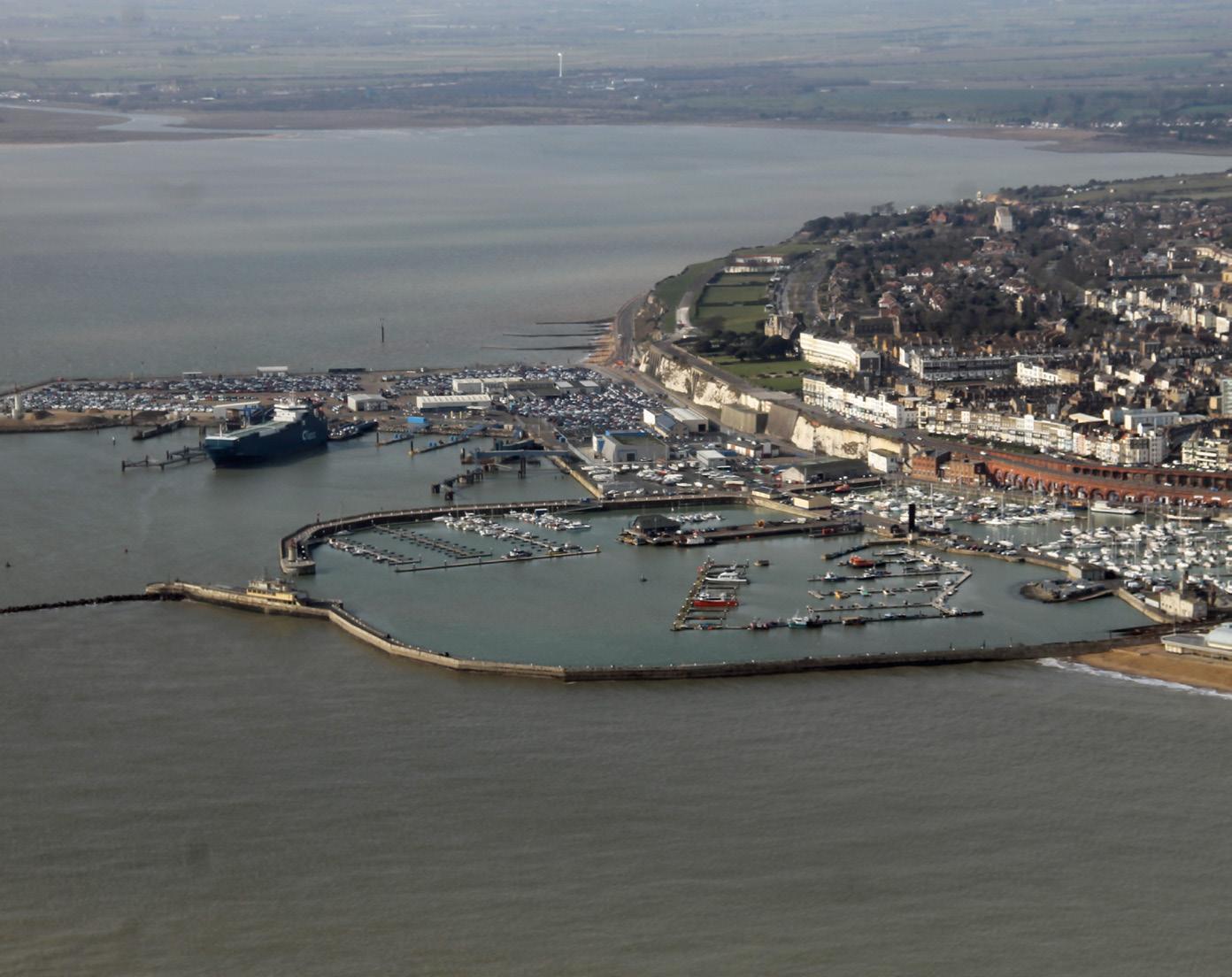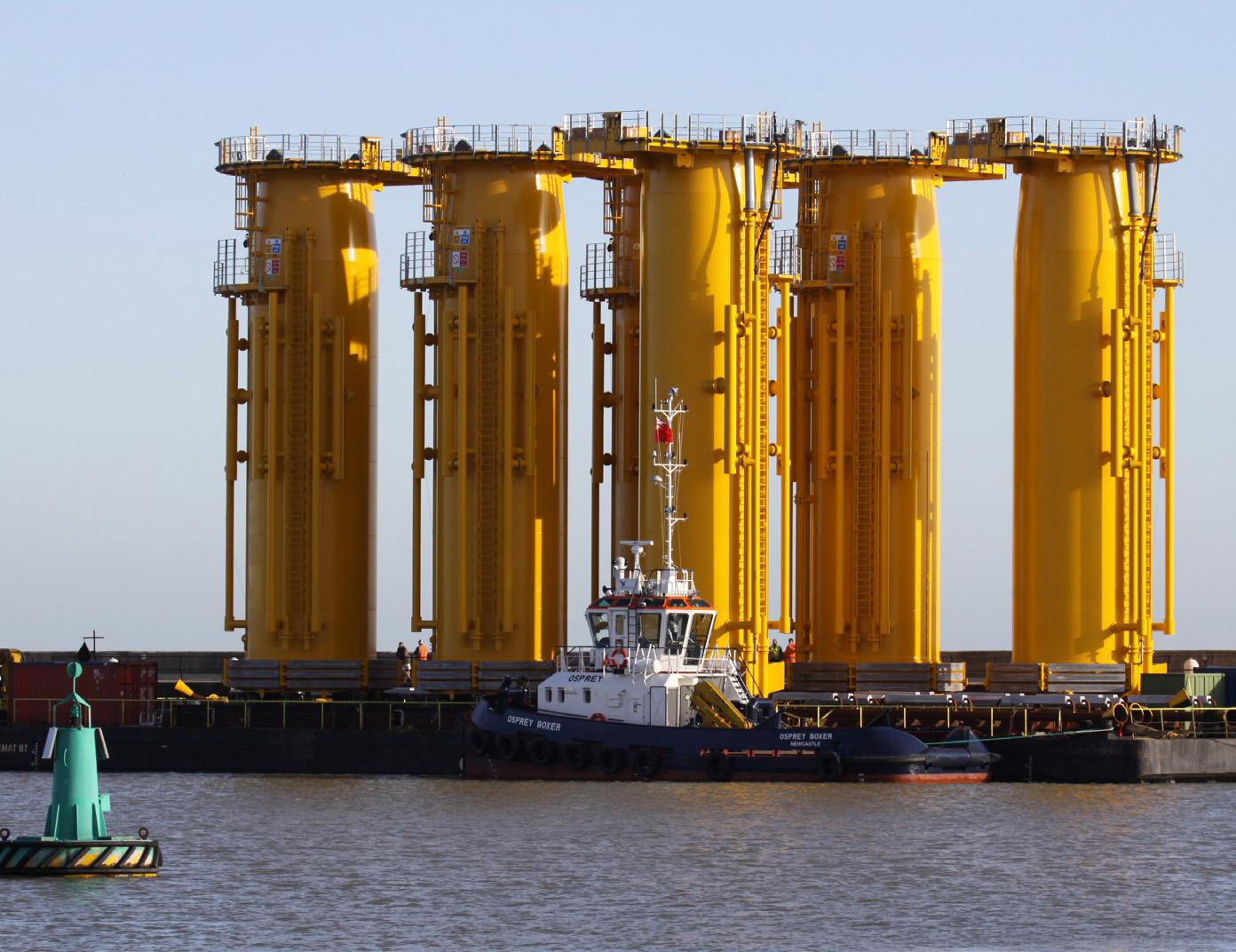
5 minute read
Master of the harbour - what goes on just off our shores? The harbour masters reveal all
10 Masters of the harbour
Writer Lila Allen
Advertisement
Photographer Storme Sabine
It is the centrepiece of the town: as the weather warms up the perfect spot for lunch or drinks in the sun; in winter twinkling with Christmas lights and the backdrop to fireworks ringing in the new year. But Ramsgate’s Royal Harbour is also a busy working waterway. So just what does go on here? We meet the harbour master to find out about the world he surveys
We are standing looking out across Ramsgate harbour, masts swaying against the grey sky, but even in this weather the water looks blue, calm, the boats gently bobbing and clinking in the wind. As harbour master Robert Brown and assistant harbour master Simon Bown survey the scene, all is well. “We dye the water blue,” they joke. But everything else we are looking at really is their responsibility. Even the naturally occurring sediment, which gives the water its turquoise hue, needs surveying every three months, which then informs the need for dredging. As Robert explains, these waters are “like an unpredictable partner, you never know what might happen next”.
His relationship with the harbour stretches back his whole life. Robert was born in Margate and schooled in Ramsgate, before setting off on a career spanning aviation, engineering and the merchant navy, returning to the area to work as flight crew on hovercrafts. Ten years ago he became Ramsgate’s harbour master. On the day the Ramsgate Recorder visits Robert had been woken by a call from a private boat owner to report the electricity had gone out. On Christmas Day a small boat sank, thankfully empty, and had to be reclaimed from the water. Every month the waters have to be cleared of invasive Pacific oysters. (They are edible, we’re told, but need thorough cleaning as they can carry the herpes virus.) The variety is what he loves most about the job, and there is such a variety here. The dockmasters, of whom there are five, Robert at their helm, look after the Royal Harbour, and also the neighbouring port, both owned and operated by the council. Margate and Broadstairs harbours are also managed from these offices, tucked away in the historic Home for Smack Boys. The smooth running of the busy waters is what the harbour masters are here to ensure, so just what’s going on can often go unnoticed.
Today a large barge is being brought into the harbour to be taken up the slipway where it will be
worked on. In the port, a huge pile of sand stands waiting to be collected for use in the construction industry. Ramsgate has protected status as a mineral wharf, and is one of the places in the UK where sand and gravel is landed. Every month a 100-metre vessel arrives carrying 4,000 tonnes of sand which self-discharges in around two hours.
It’s one of the harbour master’s jobs to bring large vessels like this safely in, to pilot them, and a sharp eye is kept on the weather, the winds, the swell, and tidal flow. Robert’s local knowledge is relied upon by visiting captains. Just beyond the harbour wall are the infamous Goodwin Sands that have cost many experienced seafarers their lives. The harbour master will often go out to meet vessels at sea, clambering up a rope ladder, sometimes nine metres high, to meet the captain on the bridge (the platform from which a boat is commanded) to help deliver a safe passage into or out of Ramsgate.
It is a beautiful view of the town that greets you from the sea, a view enjoyed by the 30 people who live on the boats they keep here. With three marinas dedicated to leisure use, Ramsgate offers 650 berths. The water brings some 5,000 to 10,000 visiting boats to Ramsgate every year, mostly from Holland,

A birds’ eye view of the harbour and port

Parts of a wind turbine to be taken to Thanet Offshore Wind Farm

Belgium, Germany and the rest of the UK.
But there are also commercial boats here. Six pilot cutters, bright orange against the grey sky, are based here, delivering and collecting pilots to and from ships using Ramsgate harbour and the Thames Estuary to reach London or Sheerness. Three hundred and twenty wind turbines are serviced from Ramsgate, with their operation and maintenance boats stationed in the harbour. Sixteen fishing vessels set out from Ramsgate every day. Eleven charter boats offer seal-watching, angling and trips to the wind farms. UK Border Force have a base here. Over at the port a regular car shipment arrives, the largest unloading 1,060 vehicles. Controversially, live animal exports take place from here, something Robert is keen to stress the port is legally obliged to accommodate. Last year, seven huge transformers weighing 350 tonnes each came in via Ramsgate for use in Project Nemo, the national grid’s submarine power cable between Kent and Belgium. For the first time Ramsgate was also host to a cruise ship, Silversea’s Silver Cloud, with 250 passengers arriving by sea. But Ramsgate has seen busier times. The port was developed from the late 1970s to the early 1990s to operate scheduled ferries. Up to five million passengers a year made the crossing for duty-free shopping, but when that ended in the mid 1990s, so too did the “booze cruise”; the service became less viable, finally ending in 2013. The world’s first commercial hovercraft service ran from Ramsgate, before moving to Pegwell Bay, where that also closed. These waters have seen high speed catamarans and a Boeing jetfoil running services to Ostend. Proximity to the continent has seen Ramsgate play a pivotal role in the Napoleonic wars and the Dunkirk evacuation. Now a feasibility study is due to report back to Thanet District Council about the future of the port. There has been plenty of speculation about Ramsgate’s post-Brexit future, dividing opinion just like the referendum that got us here. But today the waters are still, and Robert says it’s pride he feels as custodian of the only Royal Harbour in the country. It is “truly a unique asset”, he says, and one that shapes the town as its backdrop. But as harbour master he knows that “it’s the sea that’s boss”.










